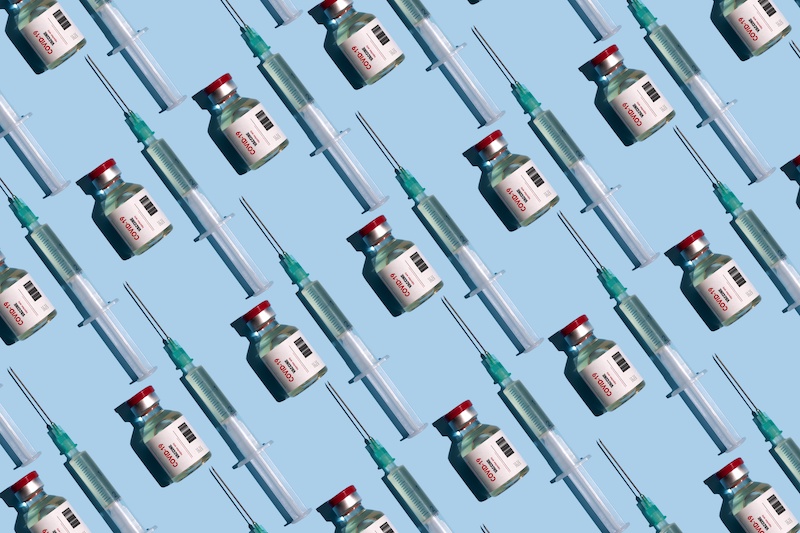Topics

Courtesy of Getty Images
As we begin the month of March, it’s hard to believe COVID-19 has impacted our lives for a full year. In December 2020, we saw a light at the end of the tunnel as two vaccines – produced by Pfizer and BioNTech and Moderna – were approved by the Food and Drug Administration (FDA) for emergency use in the United States and distribution began.
Now, we have another vaccine in our arsenal. On Feb. 27, the FDA granted emergency use authorization for Johnson & Johnson’s coronavirus vaccine. The Centers for Disease Control and Prevention (CDC)’s Advisory Committee on Immunization Practices (ACIP) also endorsed its use in the U.S. This is the first vaccine currently available that comes in a single dose.
As a vaccine developer and researcher, I’m incredibly encouraged by the progress made thus far as we continue in our fight against COVID-19. Following the recent news regarding this third vaccine, I wanted to share some of the most common questions about Johnson & Johnson’s vaccine.
What is the difference between the Johnson & Johnson (J&J) vaccine, and the Pfizer and Moderna vaccines?
The Pfizer and Moderna vaccines are made using messenger RNA, or mRNA, a technology that delivers a bit of “genetic code” to cells to produce the surface spike protein. The J&J vaccine uses a harmless adenovirus vector engineered to carry the “genetic code” for the surface spike protein. Once the adenovirus enters cells, they use that code to make spike proteins.
What is the J&J vaccine made of?
The vaccine, known as JNJ-78436735 or Ad26.COV2.S, is an adenovirus type 26 modified to produce the SARS-CoV-2 Spike protein. This adenovirus vaccine is used as a single intramuscular injection, and when it enters a cell it produces the vaccine protein but cannot replicate inside the cell or cause illness.
What is an adenovirus?
An adenovirus is a part of a family of viruses that cause non-life-threatening infections in the optic, respiratory, or gastrointestinal tissue of a diverse range of hosts, including humans. Adenoviruses can be engineered in the laboratory to make them safe and efficient for human use as vaccines by deleting certain sequences that remove their ability to replicate and cause symptomatic infections, making them excellent vectors for delivering vaccine antigens.
Can an adenovirus vector vaccine cause COVID-19?
No. An adenovirus vector vaccine does not contain any of the components of the SARS-CoV-2 virus that causes COVID-19, so it cannot cause COVID-19.
What is the efficacy of the J&J vaccine?
The J&J one-dose vaccine was shown to be on average 66% protective against moderate to severe COVID-19 infections overall from 28 days after injection. Specifically, in the U.S., the vaccine was 72% protective. Importantly, the vaccine was shown to be 85% protective against severe disease, with no differences across countries or across age groups among trial participants.
What are the risks associated with the J&J vaccine?
The most common side effects of the J&J vaccine are similar to those noted in the Pfizer and Moderna vaccines, including pain at the injection site, fatigue, headache, muscle pain and joint pain. To date, the J&J vaccine has not been associated with anaphylactic reactions.
Is the J&J vaccine safe for those who are pregnant or breastfeeding?
ACIP also noted that any of the current authorized COVID-19 vaccines, include the J&J vaccine, can be administered to pregnant and breastfeeding women. When eligible, the decision to receive the COVID-19 vaccine should be made by the person who would receive it in collaboration with their doctor. This week, the American College of Obstetrician Gynecologists (ACOG) also updated its practice advisory to aid patients in evaluating the benefits and potential risks of the vaccines.
Does the J&J vaccine have specific storage requirements similar to the other vaccines?
The J&J vaccine does not require an elaborate cold chain, which means this vaccine can be given anywhere easily once supplies are adequate, such as doctors’ offices, pharmacies, mass vaccination sites, public health clinics, etc. This vaccine will be much easier to use because it can be stored for at least three months at the temperature of a regular refrigerator.
When will the J&J vaccine be available and who is eligible to receive it?
Following approval from the FDA and CDC, J&J noted distribution of the vaccine would begin this week. The J&J vaccine is approved for people age 18 and older.
As the first of the three vaccines that comes in a single dose becomes available, I encourage you to receive any of these vaccines whenever you are eligible. Getting vaccinated is the most effective way to protect yourself against COVID-19. For more information and resources, please visit our dedicated COVID-19 vaccine webpage at texaschildrens.org/covidvaccine.



